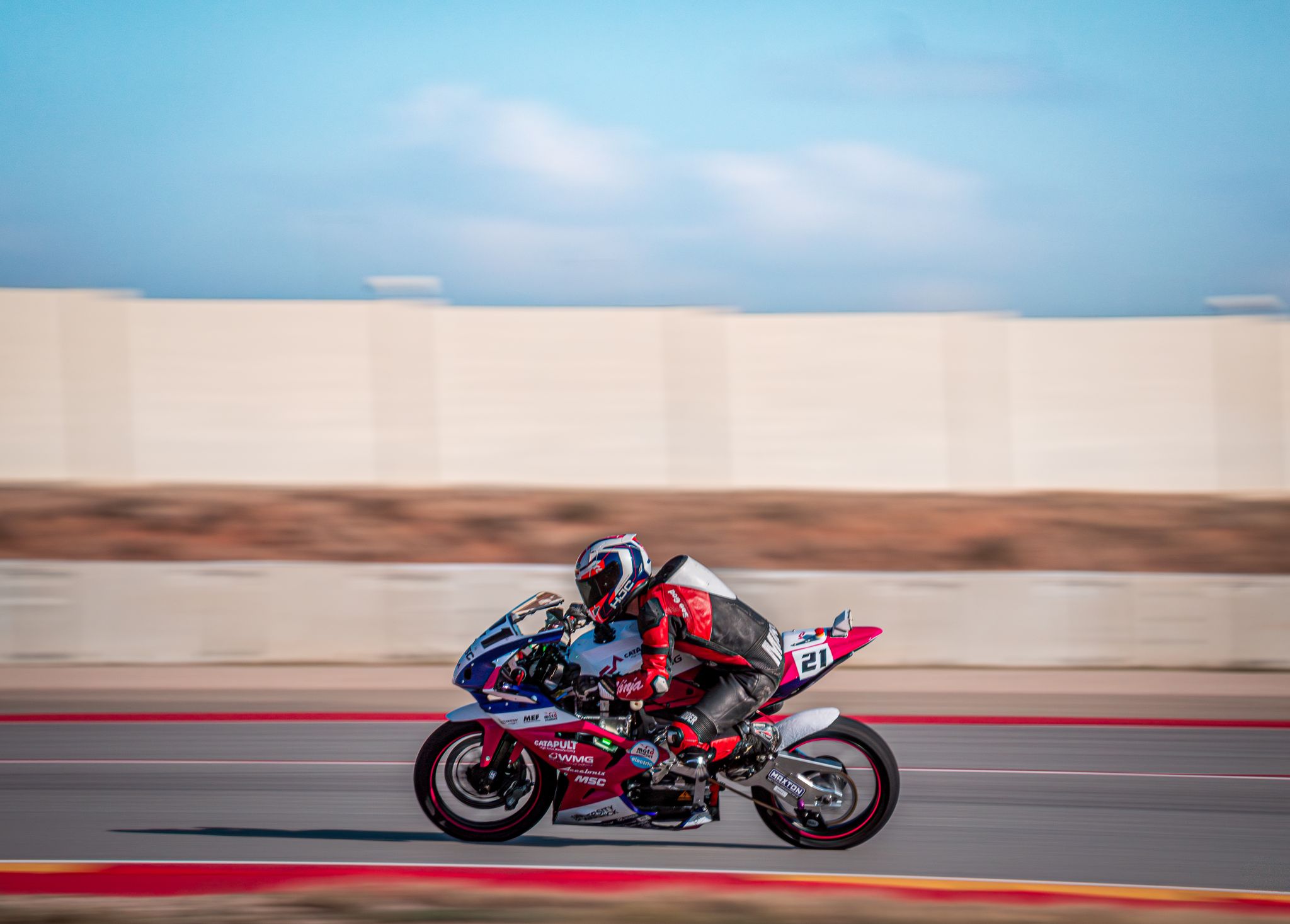Electric mobility is undergoing a quiet revolution, and universities around the world are becoming incubators for next-generation innovation. At the forefront of this transformation in the UK is Warwick Moto, a student-led engineering team from the WMG (Warwick Manufacturing Group), University of Warwick that has designed, developed, and built an all-electric racing superbike—Panther.
What makes this achievement remarkable is not just the performance metrics of the bike, but the engineering journey—from concept, design, and fabrication to testing and international competition.
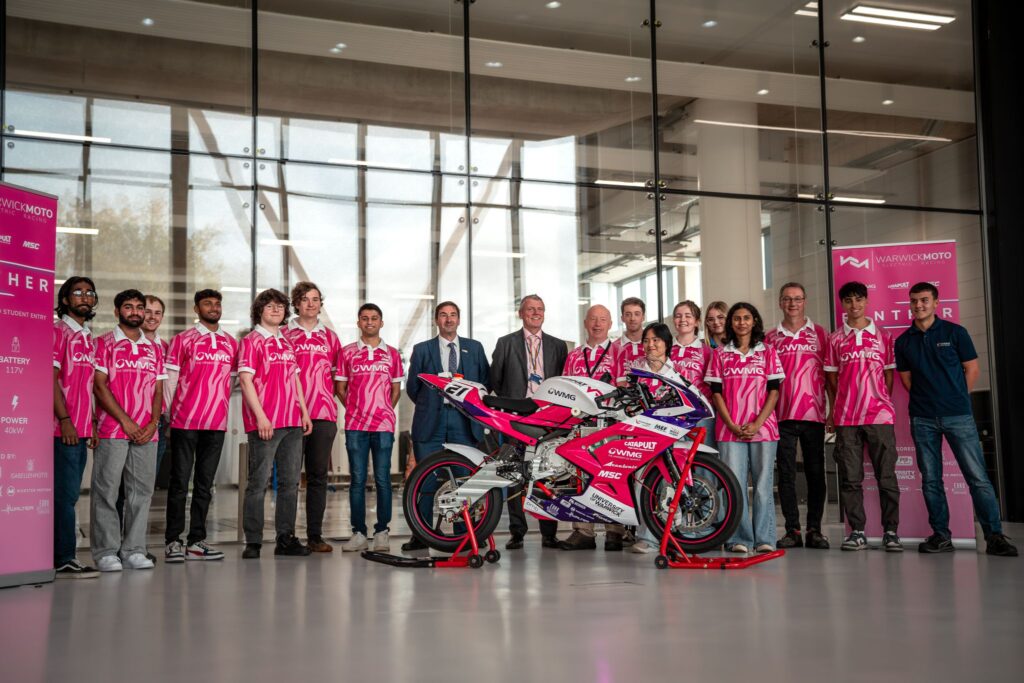
1. Building a Vision: The MotoStudent Challenge
Warwick Moto’s participation in the MotoStudent International Competition represents a unique challenge: to design and manufacture a fully functional racing motorcycle that can compete on an international MotoGP track against leading technical universities from around the globe.
In 2025, Warwick Moto stood out as the only UK entrant in the competition. This placed Panther not just as a prototype, but as a symbol of UK innovation in sustainable mobility.
The team collaborated with several industry partners including:
- Accelonix UK & Ireland – Battery module wire bonding
- MSC Industrial Supply Co. – Precision machining of critical chassis components
- Maxton Engineering Frodsham – High-performance suspension systems
- Isabellenhütte, Fronius UK, Eurocircuits, and others who provided advanced components and technical support.
This strong industry-academic partnership allowed the team to shorten development timelines and focus on engineering precision.
2. Engineering Panther: Design and Development
Panther wasn’t just assembled — it was designed and engineered from the ground up. Over a span of just 10 months, students integrated design, manufacturing, and testing into a cohesive engineering workflow.
Core Technical Specifications
- Battery Pack: 8.4 kWh, air-cooled architecture
- System Voltage: 117 V
- Motor Output: 40 kW peak power, 100 Nm torque
- Vehicle Weight: 150 kg
- Development Timeline: < 10 months from concept to rolling prototype
Every component, from the headstock to the powertrain, was either designed or adapted in-house. Special emphasis was placed on thermal management for the air-cooled battery pack, ensuring a balance between weight, performance, and endurance.
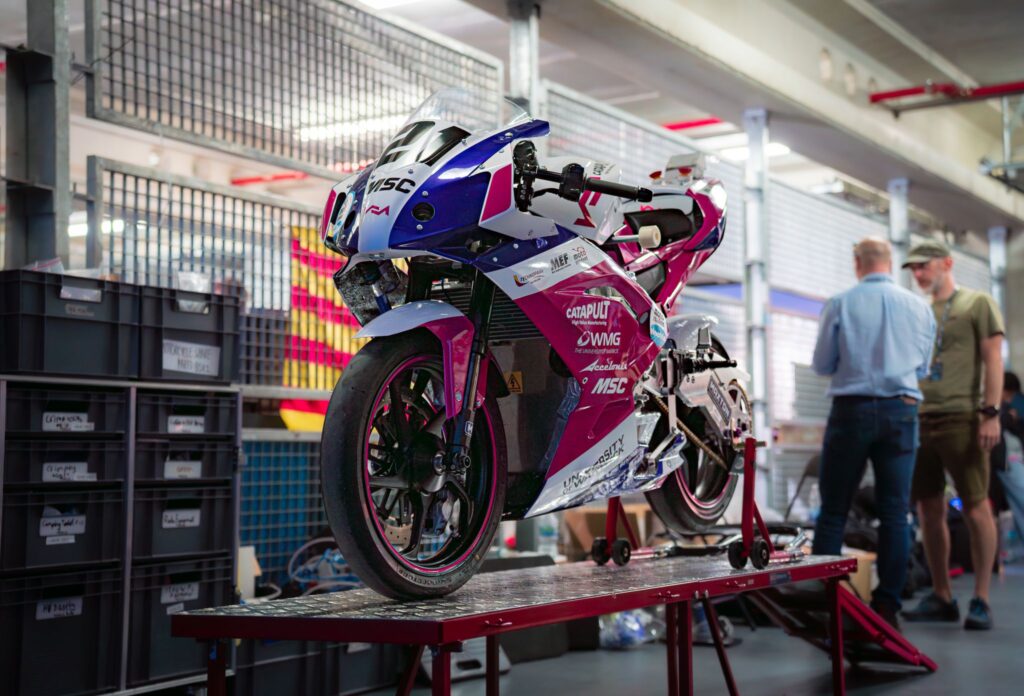
3. Mechanical Precision and System Integration
One of the first major fabrication milestones was wirebonding of the battery modules, a delicate process made possible with support from Accelonix. At the same time, MSC Industrial machined the headstock and other chassis elements to high tolerances, ensuring structural integrity under racing loads.
The suspension system received an upgrade with a rear shock from Maxton Engineering, which significantly improved damping characteristics and handling dynamics. Such tuning is critical in racing applications, where response and stability define lap times.
This phase was supervised and guided by academic and technical experts including David Cooper, Dr. James Meredith, and Malcolm Swain, ensuring the student team followed engineering rigor in design validation and quality control.
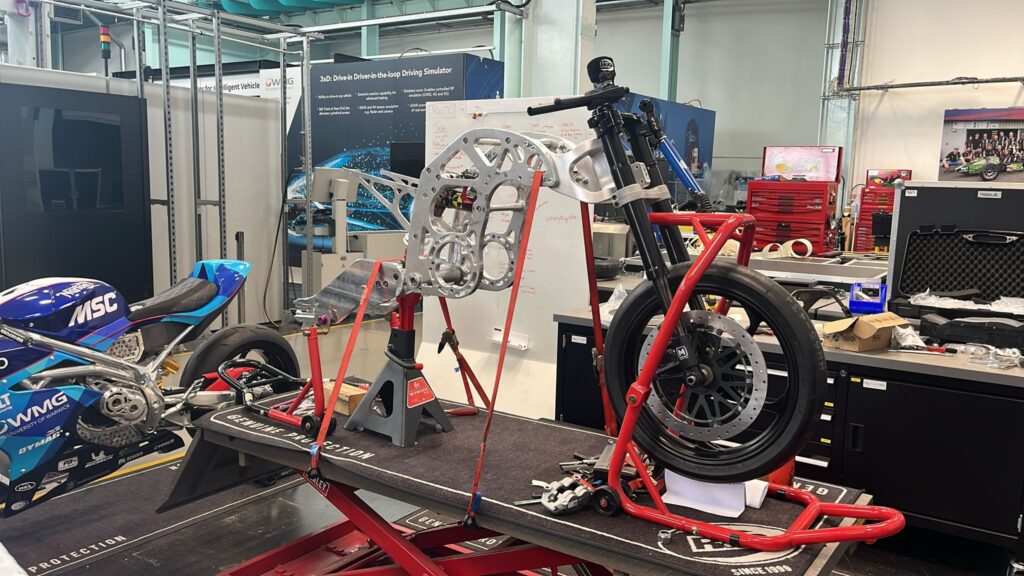
4. First Ride: Prototype Testing at Bicester Motion
After months of design and fabrication, Panther was ready to move from CAD to track reality. The first ride test at Bicester Motion marked a critical system integration milestone.
The test ride validated:
- Battery and powertrain response under load
- Real-time thermal behavior of the battery pack
- Suspension and handling characteristics at speed
- Initial performance baselines for further optimization
Led by Team Leader Nirmit Jobanputra, the test was executed flawlessly. Achieving a smooth and stable first ride is a major achievement in any prototype program, confirming the robustness of the team’s engineering process.
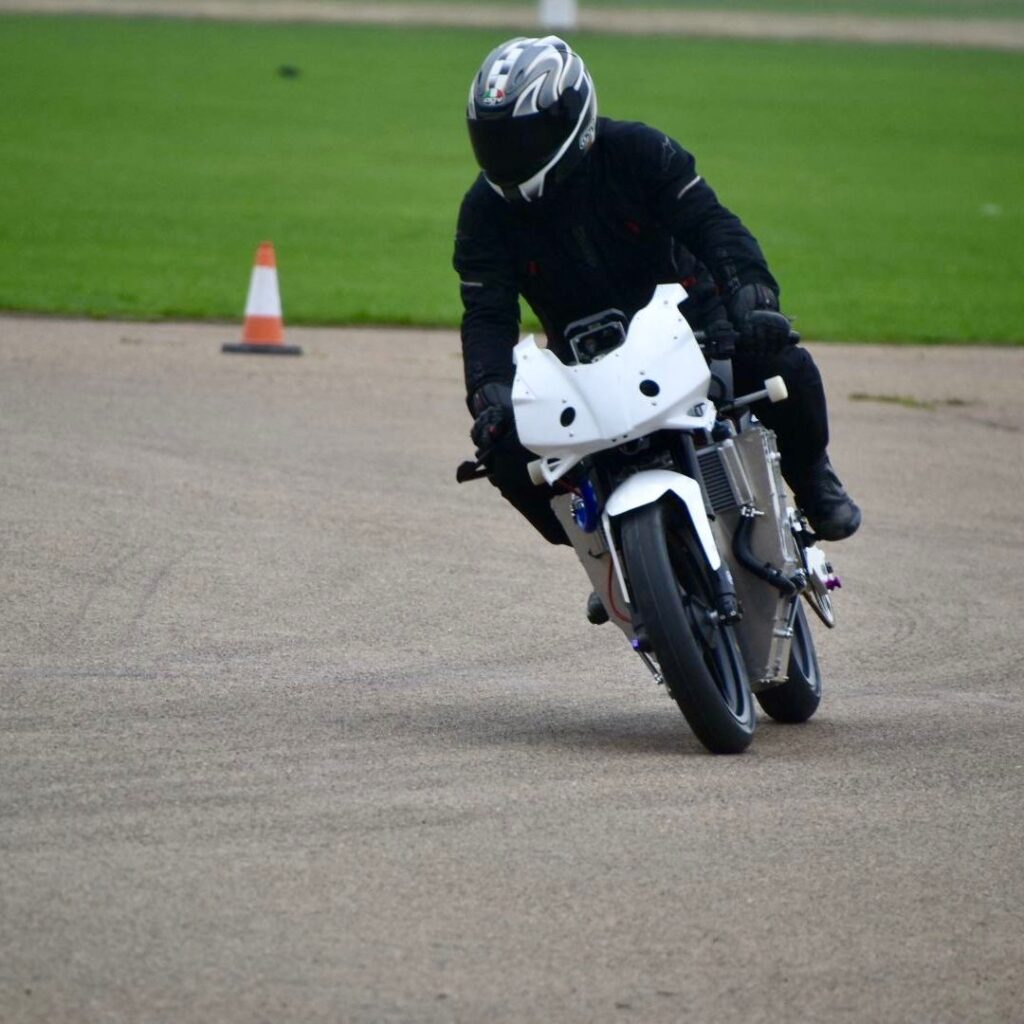
5. Data-Driven Optimization: Pre-Competition Testing
With the initial ride successful, the team moved into performance tuning and reliability testing. Insights from the first track runs were used to refine system performance and prepare for international competition.
Additional testing and scrutineering checks focused on:
- Load testing of the chassis
- Electrical systems safety
- Water ingress testing for reliability under adverse weather conditions
- Dynamic scrutineering, where the bike was ridden on the MotoGP track for performance verification
Panther reached speeds up to 163 km/h during dynamic testing, confirming both drivetrain power and aerodynamic stability.
6. The Big Stage: MotoStudent International Competition
The team arrived at MotorLand Aragón, Spain, where the MotoStudent International Competition takes place. This event pushes student-built electric bikes through rigorous static and dynamic inspections, followed by competitive racing.
Scrutineering Process Included:
- Mechanical load verification
- Electrical and safety compliance checks
- Water testing for sealing integrity
- Track evaluation by official riders
Panther successfully passed both static and dynamic scrutineering — a testament to its engineering integrity. This cleared the team to race in all competitive events.
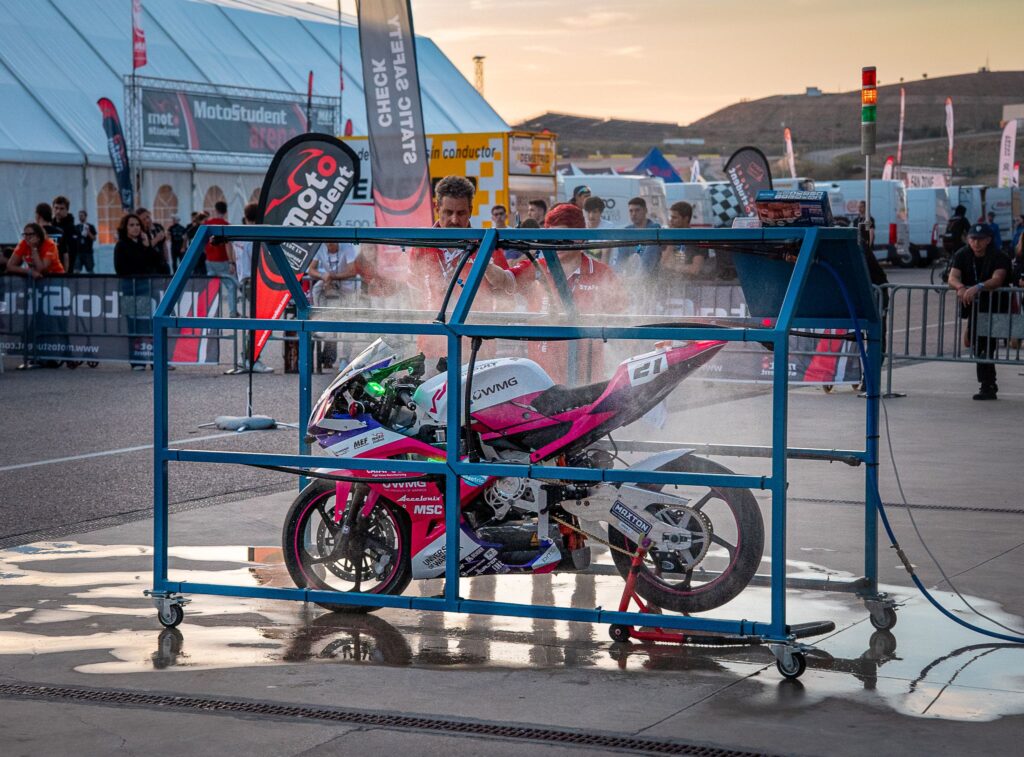
7. Beyond the Numbers: Panther as a Symbol of Innovation
While the technical specifications are impressive, Panther represents something deeper:
- A proof-of-concept for sustainable high-performance mobility
- Hands-on engineering education, where students transform theory into working systems
- Collaboration between academia and industry to accelerate clean technology development
This superbike showcases how data-driven design, advanced manufacturing, and student leadership can converge to deliver an internationally competitive electric motorcycle.
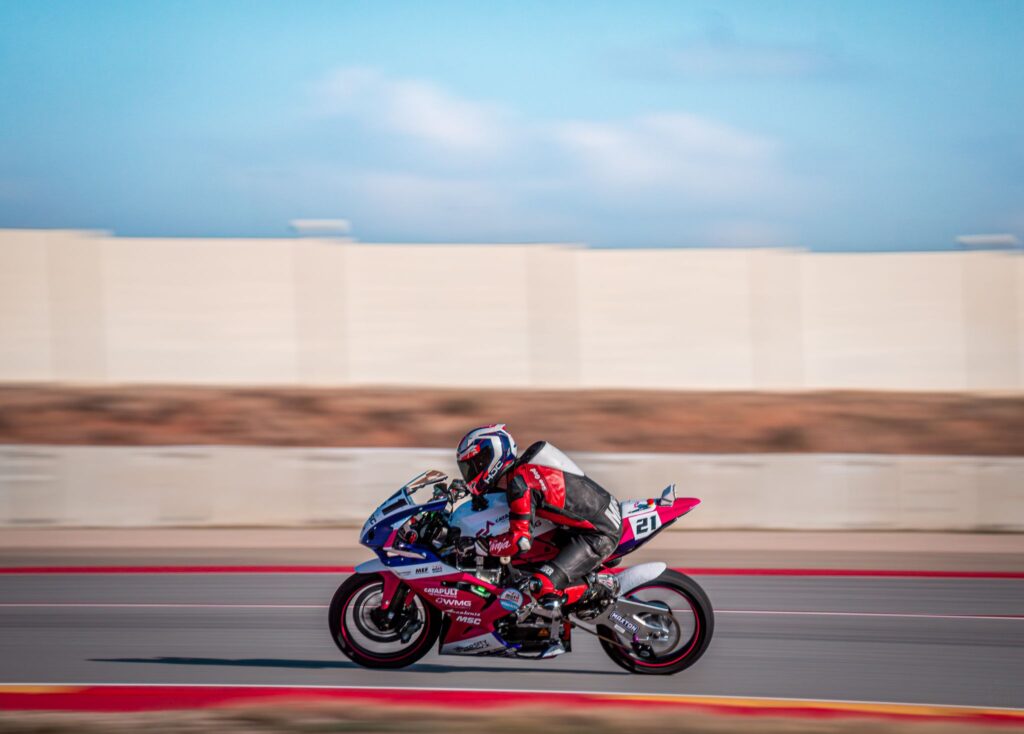
8. Acknowledgements and Collaborations
The Warwick Moto project would not have been possible without the guidance and support from:
- WMG, University of Warwick
- High Value Manufacturing Catapult
- Accelonix UK & Ireland
- MSC Industrial Supply Co. UK
- Maxton Engineering, Eurocircuits, Isabellenhütte, Fronius UK, and other industry partners.
Special appreciation goes to David Cooper, Dr. James Meredith, Malcolm Swain, and Jonathan Saul for their supervision and mentorship throughout the project.
9. Future Outlook
Panther is more than a one-off racing prototype. It represents the potential for the UK to emerge as a leader in electric motorcycle technology, bridging the gap between research labs and racetracks.
Moving forward, such projects could:
- Integrate battery thermal modeling and predictive control
- Explore lightweight composite structures for improved power-to-weight ratio
- Develop AI-based control strategies for adaptive performance tuning
For students and researchers alike, Panther is a powerful example of what can be achieved when innovation meets engineering discipline.
Conclusion
In a field often dominated by established OEMs, Panther stands out as a student-engineered superbike that demonstrates excellence in electric mobility, performance optimization, and sustainable design. From wirebonding cells to hitting 163 km/h on a MotoGP track, Warwick Moto’s journey is a model for how universities can drive the future of electric racing.
🏍️ Built by students. Powered by purpose. Racing towards a cleaner future.
Reference: Warwick Moto
